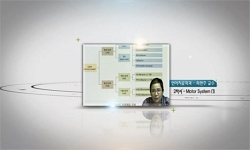The purpose of this study was to collect basic data in the gait pattern of the spastic diplegia children for rehabilitation program, and to examine the differences in the gait pattern against normal children group. Three-dimentional motion analysis te...
http://chineseinput.net/에서 pinyin(병음)방식으로 중국어를 변환할 수 있습니다.
변환된 중국어를 복사하여 사용하시면 됩니다.
- 中文 을 입력하시려면 zhongwen을 입력하시고 space를누르시면됩니다.
- 北京 을 입력하시려면 beijing을 입력하시고 space를 누르시면 됩니다.
https://www.riss.kr/link?id=A2033676
- 저자
- 발행기관
- 학술지명
- 권호사항
-
발행연도
1999
-
작성언어
Korean
- 주제어
-
KDC
692
-
자료형태
학술저널
-
수록면
157-177(21쪽)
- 제공처
-
0
상세조회 -
0
다운로드
부가정보
다국어 초록 (Multilingual Abstract)
The purpose of this study was to collect basic data in the gait pattern of the spastic diplegia children for rehabilitation program, and to examine the differences in the gait pattern against normal children group. Three-dimentional motion analysis technique was employed to compare the gait pattern of five children with diplegic cerebral palsy against a group of 10 normal children of the same age.
The following conculsions were drawn from the results:
Spastic diplegia revealed asymmetrical gait pattern in which the step length of the stride which was a result of the effort to minimize the loading on the leg by shortening the swing phase of the leg. C.P spastic diplegia scored lower phase ratios, lesser cadence and walking velocity with lower gait stability and function. More anterior tilting of the pelvis was observed throughout the gait cycle. C.P. children showed more hip and knee flexion during the stance phase.
The main problem in C.P children originated from the insufficient dorsiflexion of the foot during the swing phase. Therefore, C.P children showed difficulty with foot clearance in the swing phase. Usually, this compensated for by using excessive hip adduction and external rotation in conjunction with trunk elevation flexion and as well as increased vertical displacement of the center of mass. C.P spastic diplegia revealed foot flat and forefoot initial contact pattern.
The findings were as follows:
1. The walking velocity and stride length decreased in the spastic diplegia group.
2. The proportion ratios of the stance phase tended to increase with spastic diplegia.
3. The range of the hip joint motion with C.P increased while knee flexion angle during the swing phase increased.
4. The plantar flexion angle of the ankle also increased through the gait cycle.
5. Hip adduction and external rotation with C.P increased through the gait cycle.
동일학술지(권/호) 다른 논문
-
Sport Manager's Perception Analysis of Secondary School Sport Programs in Inchon,Korea
- 仁荷大學校 스포츠科學硏究所
- Moon,Jung Ok
- 1999
-
- 仁荷大學校 스포츠科學硏究所
- 河永俊
- 1999
-
- 仁荷大學校 스포츠科學硏究所
- 추건이
- 1999
-
최대하 운동시 온도변화에 따른 운동복 형태가 인체에 미치는 영향
- 仁荷大學校 스포츠科學硏究所
- 김광희
- 1999




 RISS
RISS




